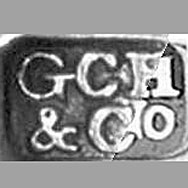Sterling Silver - plain with no decoration
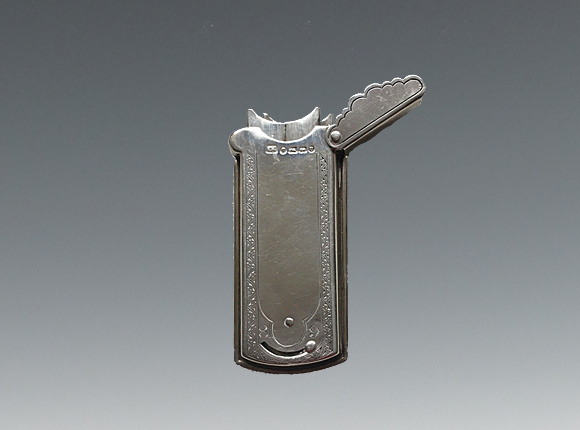
Needle Case (photographs from eBay)
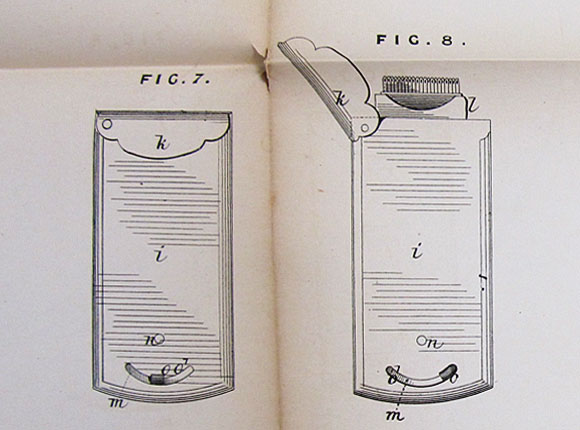
UK Patent 1868-3517 drawing
Design Details
Needle Case Type: |
Quadruple |
Patent/Registered to: |
William Avery, Redditch Needle Manufacturer and Albert Fenton of the same place, Machinist |
Patent/Design Representation #: |
Mechanical Patent: #3517 |
Patent/Design Registration Date: |
November 19, 1868 |
Location of Patent/Design Registration: |
British Library - Business and Intellectual Property Centre – London |
Reference #: |
1868-3517, Figures 7-10 |
Dimensions: |
3.3 x 7 |
Material: |
Sterling Silver |
Name Variations: |
G. C. H. & Co. (aka George Carter Haseler of Birmingham) |
Other Variations: |
See other Quadruples |
US Patent |
US 1870-98904 |
Additional Photographs
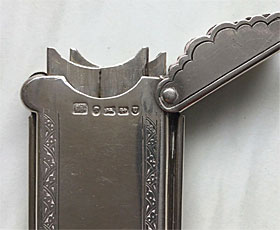
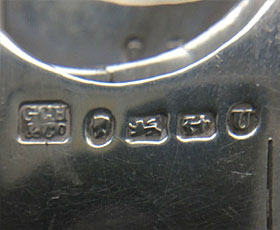
Detail views of the front showing the silver hallmarks
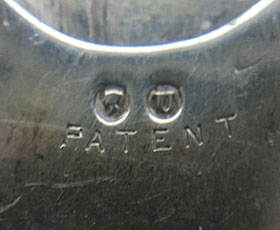
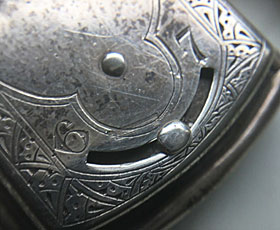
Detail view of the back showing the silver hallmarks and close up of the edge decoration
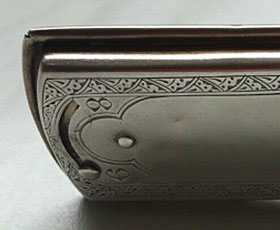
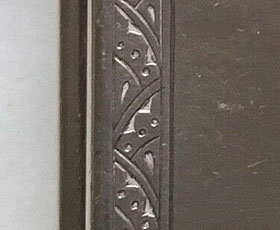
Additional photos of the edge decoration
British Hallmarks Explained
It seems most likely that this sterling-silver needle case was intentionally manufactured without decoration, presumably so it could be custom
engraved by a jeweler. To date five examples of sterling-silver Quadruple needle cases have been found and each one contains silver hallmarks.
A typical antique British hallmark is composed of five parts: a silver standard mark, a city mark, a duty mark, a date letter and a maker's mark. Although these marks are not
always shown in the same order, they are found on all antique items made of sterling silver in the UK. A description of each mark and its purpose is listed below with
examples. This information comes from the "Online Encyclopedia of Silver Marks, Hallmarks & Makers' Marks" website at www.925-1000.com/british_marks.html.
Silver Standard Mark
The standard mark indicates the purity of the silver. The lion passant is the symbol that represents sterling.925. According to google, a "lion passant" is walking, with
the right fore paw raised and all others on the ground.
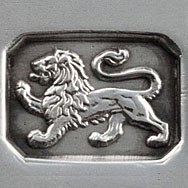
City Mark
The city mark indicates the town in the UK where the item was made. The anchor is the symbol of Birmingham.

Duty Mark
In 1784 the duty mark was created to indicate a tax on the item had been paid to the crown. The mark used was a profile portrait of the reigning monarch's
head. The example shown here, Queen Victoria, was used from 1838-1890. The use of this mark was abolished in 1890.
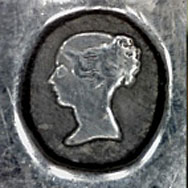
Date Letters
The date letter system was introduced in London in 1478 (elsewhere as the hallmarking system evolved). Its purpose was to establish when a piece was presented for
assay or testing of the sivler content. The mark letter changes annually in May, the cycles of date letters were usually in strings of 20 and each cycle was differentiated by
a changing of the font, letter case and shield shape The letter "U" below represents 1869.

Maker's Mark
The enforced use of the maker's mark was instituted in London in 1363. Its purpose was to prevent the forgery of leopard's head marks upon silver
of debased content by providing an indication of the party responsibile for the piece. Originally, makers' marks were pictograms, but by the begigining of the 17th Century
it had become common prctices to use the maker's initials. The initials seen here, G. C. H & Co represent the Birmingham jeweler George Carter Haseler.
